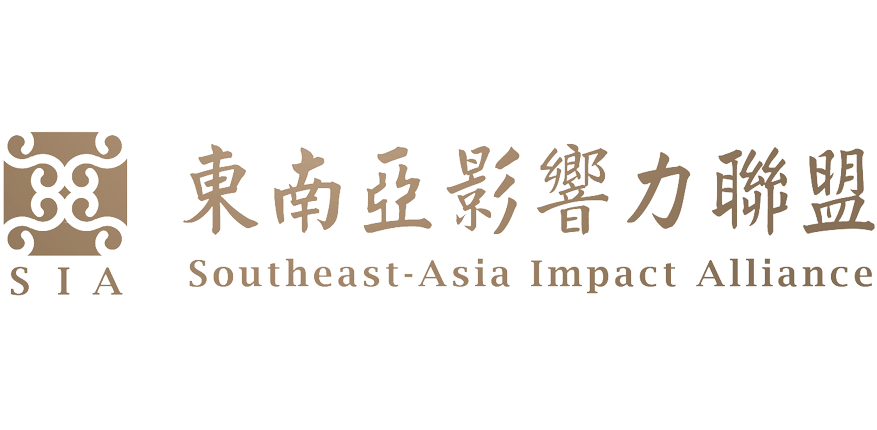[Media support] Taiwan-Vietnam Medical Scientific Conference 2024
![]() Taipei Veterans General Hospital will organize its largest event overseas, “Taiwan-Vietnam Medical Scientific Conference 2024”!
Taipei Veterans General Hospital will organize its largest event overseas, “Taiwan-Vietnam Medical Scientific Conference 2024”!

![]() Taipei Veterans General Hospital will organize its largest event overseas, “Taiwan-Vietnam Medical Scientific Conference 2024”!
Taipei Veterans General Hospital will organize its largest event overseas, “Taiwan-Vietnam Medical Scientific Conference 2024”!

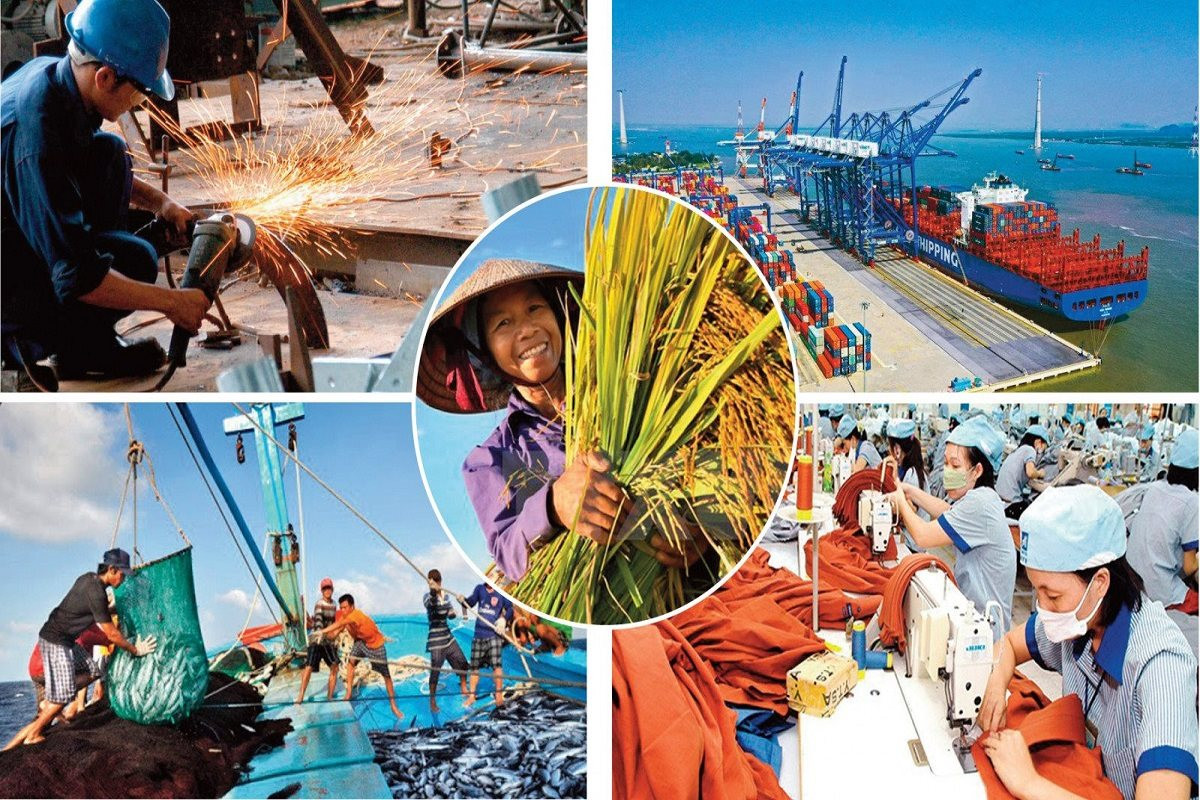
Many forecasts indicate that Vietnam’s GDP growth in 2023 will only reach above 5%. The Central Institute for Economic Management (CIEM) (under the Ministry of Planning and Investment) predicts Vietnam’s GDP in 2023 to be around 5.19%. Recently, the Asian Development Bank (ADB) projected a rate of 5.2%, significantly lower than the previous estimate of 5.8%. Notably, Vietnam’s forecasted growth of 5.2% is equivalent to China’s projected growth for the current year – the world’s second-largest economy.
Despite being recognized as an extremely challenging year, 2023 has seen several “bright spots” in the economy. According to CIEM’s assessment, some macroeconomic indicators are moving in a positive direction, with GDP growth showing improvement, particularly in the later quarters. The estimated GDP growth for Q4/2023 is 7.72%, Q3/2023 is 5.23%, Q2/2023 is 4.05%, and Q1/2023 is 3.28%.
According to Dr. Can Van Luc, Chief Economist at BIDV, a member of the National Financial-Monetary Policy Advisory Council, Vietnam cannot escape the impacts of the world economic difficulties. However, signs of economic recovery are quite evident. The economy has multiple drivers for growth in both 2023 and 2024, such as the global shift in supply chains and capital flows, the reopening of the Chinese market, significant growth in services and consumption, increased public investment with moderate fiscal risks, ample policy space, decreasing inflation and interest rates, stable exchange rates, and controlled risks of bad debts.
Dr. Can Van Luc shared that despite Vietnam’s GDP growth in 2023 being lower than the target range of 6-6.5%, it remains one of the highest growth rates in the Asia-Pacific region. Notably, from June onwards, there have been clear signs of economic recovery. Analyzing specific economic indicators such as exports, industrial production indices, Dr. Can Van Luc believes that the economy is improving. “Clearly, we have recovered and are regaining positive growth momentum,” he asserted.
Especially noteworthy is the positive change in the institutional framework, with many important laws passed by the National Assembly and in the process of approval, such as the Land Law, Housing Law, Real Estate Business Law, E-Transactions Law, Credit Institutions Law, among others.
Furthermore, the entire set of policies (relief measures, tax and fee deferrals, reductions, etc.) issued by the government in recent times to support various markets, including the capital market, land, real estate, and tourism, has been unprecedented. Importantly, most of the policies implemented since the COVID-19 pandemic have been maintained.
Dr. Luc emphasized that diplomatic efforts in general and economic diplomacy in particular have been highly successful in the past year.
At the recent Vietnam Economic Forum 2023 organized by the United Nations Development Programme (UNDP) and CIEM, CIEM announced the update of three economic growth scenarios for Vietnam in 2024. These scenarios include a low scenario with GDP growth of 5.5%, a baseline scenario with GDP growth of 6%, and a high scenario with GDP growth of 6.5%.
This forecast closely aligns with the latest predictions from some international financial institutions, such as the World Bank projecting 5.5% (August 2023), the IMF forecasting 5.8% (October 2023), and the ADB forecasting 6% (September and December 2023).
Recently, during the 6th session, the National Assembly passed Resolution 103/2023/QH15 on the economic and social development plan for 2024, with a target GDP growth range of 6-6.5%.
2024 is recognized as a challenging year for the Vietnamese economy due to lingering internal difficulties from 2023. Additionally, global political situations remain complex and unpredictable, with a mild decline projected in global economic growth, including several major trading partners of Vietnam. Inflation is expected to remain high, possibly surpassing 2023 levels, making the management of Vietnam’s monetary policy challenging and requiring greater flexibility.
Nevertheless, a positive aspect is the stable economic growth over an extended period, providing momentum for a more favorable recovery. Vietnam’s political and trade position is increasingly emphasized internationally, with upgraded relations with the U.S. and Japan and the activation of some new free trade agreements. The government focuses on supporting economic recovery, with certain support policies extended into 2024.
In the economic scenarios, CIEM predicts that GDP in 2024 could grow corresponding to the baseline scenario (6%). To achieve this growth, CIEM’s research team suggests focusing on several solutions, including stabilizing macroeconomic conditions, controlling inflation, especially focusing on economic growth drivers, improving institutions and the business environment, enhancing infrastructure for production, and supporting production entities while promoting the development of goods and services markets.
According to the Resident Representative of UNDP in Vietnam, Ramla Khalidi, for Vietnam’s economy to strongly recover in 2024, flexibility in addressing existing challenges is crucial. Innovation, creativity, and energy transition present new opportunities for Vietnam to penetrate new markets, increase the value and quantity of goods, boost exports, attract investment, and leverage advanced technologies such as semiconductor technology and artificial intelligence.
Economic expert Nguyen Xuan Thanh, a lecturer at Fulbright University Vietnam, identifies the first driver for Vietnam’s economic growth in late 2023 and 2024 as exports. He suggests that Vietnam can achieve export growth ranging from 5-7% by exporting to the recovering U.S. market.
Dr. Can Van Luc predicts that global economic growth in 2024 may be flat or slightly reduced, but Vietnam is expected to recover at 6-6.5%, with inflation well within control at around 3.5-4%. To ensure this growth, fiscal policies from 2023 should continue to be applied. Monetary policies, such as interest rate reduction and debt restructuring, should also be extended throughout the year. For businesses, a strong restructuring, diversification of capital sources, and rapid transition towards green and digital directions are recommended.
“The target of 6-6.5% growth in 2024 is relatively challenging in the current context. However, many conditions and developments in the last months of 2023 support the growth prospects in 2024,” emphasizes Dr. Le Duy Binh, Director of Economica Vietnam.
Source: Phap Luat Viet Nam | Link
Visit our service | Link
The Vietnamese government announced Regulation No. 19/2023/TT-BCT on November 1, 2023, establishing the mechanism for feed-in tariffs for renewable energy. The regulation officially took effect on December 19, 2023, with rates to be published annually. The applicable energy types include ground-mounted solar, floating wind, onshore wind, and offshore wind. Solar rates vary by region, with separate rates for the northern, central, and southern regions. Solar projects operational before January 1, 2021, and wind projects operational before November 1, 2021, are not subject to the constraints of the new pricing mechanism.
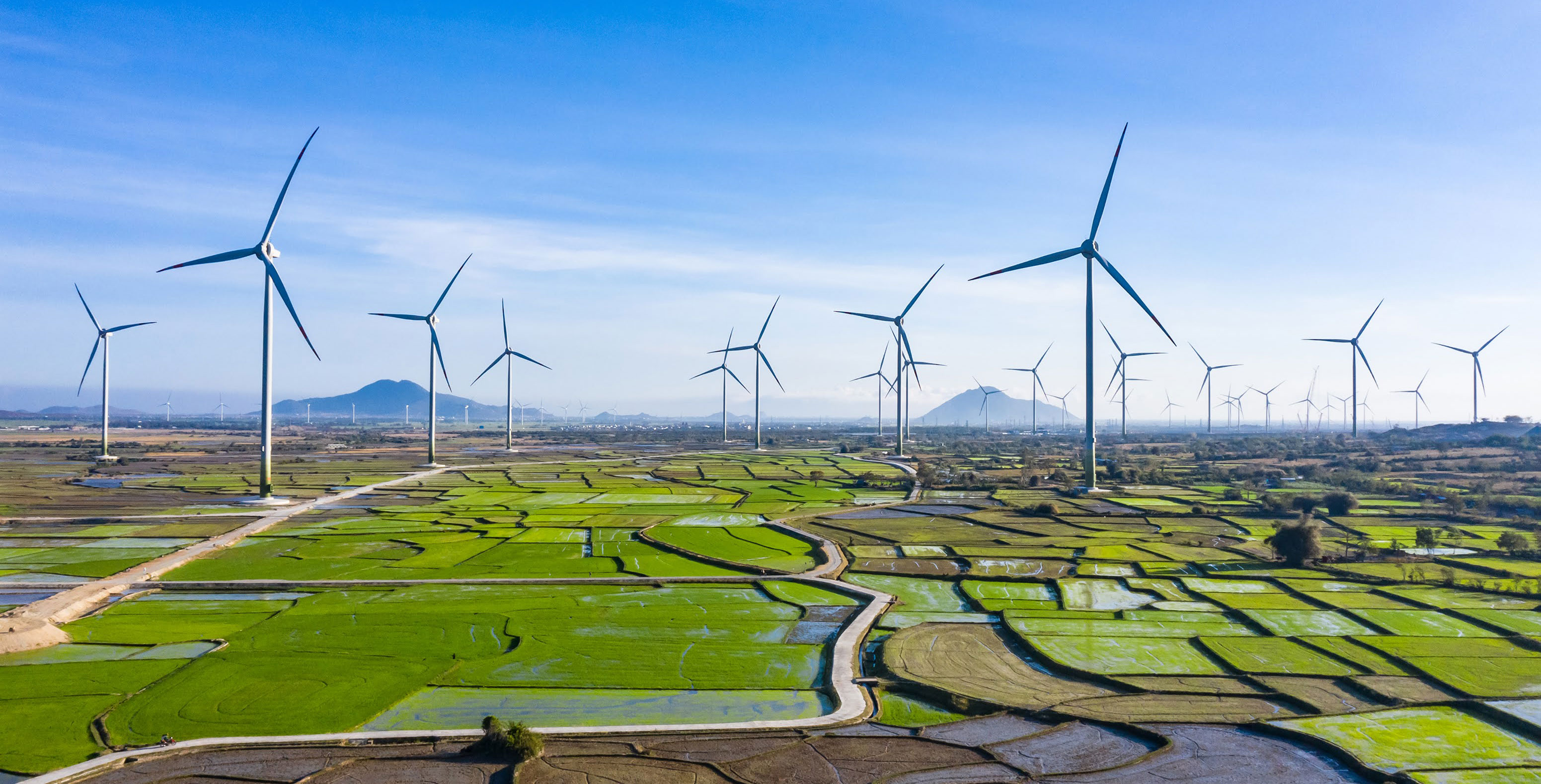
The solar feed-in tariff announced by the Vietnamese Ministry of Industry and Trade in 2017 was 9.35 US cents per kWh, approximately 2.86 Taiwanese dollars per kWh, applicable to projects completed before December 31, 2020. The wind power feed-in tariff announced in 2018 (onshore wind: 8.5 US cents per kWh, approximately 2.4 Taiwanese dollars per kWh; offshore wind: 9.8 US cents per kWh, approximately 2.7 Taiwanese dollars per kWh) applied to wind projects completed before October 31, 2021, and transitional projects unable to meet the aforementioned deadline.
Electricity generation price (VND/kWh) = Average fixed price (VND/kWh) + Fixed O&M costs (VND/kWh)
Average fixed price=Annual adjusted investment capital for construction (excluding VAT ( VND) / Average multi-year delivered electricity (kWh)
Fixed operational and maintenance costs=Total fixed operation and maintenance cost (VND) / Average multi-year delivered electricity (kWh)
Other parameters include the power plant’s operational lifespan (20 years), the foreign currency to Vietnamese dong debt ratio (80/20), debt to equity ratio (70/30), and the average debt repayment period (10 years).
The rates will be determined by the Vietnam Electricity Corporation (EVN), responsible for selecting “standard solar and wind projects” as the basis for rate calculation by November 1st each year. The relevant calculations will be submitted to the Electricity Regulatory Authority of Vietnam (ERAV) for approval and publication.
According to English reports, the rates are not applicable for the entire lifecycle (e.g., 20 years) but vary annually, leading to higher uncertainty in development investments. Furthermore, solar rates vary by region, affecting investment targets for developers. Lastly, the feed-in tariff mechanism does not include adjustments for exchange rate fluctuations.
Source: Vocus | Link
Visit our service | Link

The socio-economic trends continue on a positive trajectory, with each subsequent month surpassing the previous, the next quarter outperforming the last. The nation has essentially achieved its overall goals, attaining significant results in various sectors. Vietnam remains a bright spot in the global economy, surpassing 10 out of 15 set targets.
In 2023, Vietnam is acknowledged by many international organizations for achieving notable successes in economic and social development. The macroeconomy is fundamentally stable, with inflation lower than the National Assembly’s set target. Public debt, government debt, foreign debt, and the state budget deficit are under control. Growth is stimulated, and major economic balances are ensured. Achieving a GDP growth of around 5% for the year is a considerable effort amid challenging global conditions, positioning Vietnam as one of the high-growth countries in the region and the world.
The agricultural sector continues to be a strong pillar and a stable support for the economy during difficulties. The service sector is vibrant, and the industrial and construction sectors are gradually recovering.
Reputable international organizations highly evaluate the results and prospects of Vietnam’s economy, forecasting a rapid recovery in the near future. Fitch Ratings has upgraded Vietnam’s long-term credit rating to BB+ (from BB), with a “Stable” outlook. The national brand value of Vietnam has reached $431 billion, rising one spot to 32nd out of 100 powerful national brands worldwide.

Vietnam successfully hosts and welcomes the General Secretary and President of China, Xi Jinping.

Vietnam successfully hosts and welcomes President of the United States, Joe Biden
The foreign affairs and international integration efforts have been dynamic, comprehensive, and continuously successful in 2023. This has been a notable highlight, characterized by the harmonious, coordinated, and effective collaboration of the Party’s foreign affairs, State diplomacy, and people-to-people diplomacy.
Several historic achievements in foreign affairs have created new opportunities for the country’s development. Particularly noteworthy are the well-prepared and successfully organized official visits to Vietnam by General Secretary and President of China, Xi Jinping, and President of the United States, Joe Biden. A series of visits and work in foreign countries by Party and State leaders have deepened relations with many important partners. The image, stature, reputation, and position of Vietnam have been elevated to new heights.
To date, Vietnam has established comprehensive strategic partnerships or strategic partnerships with all five permanent member countries of the United Nations Security Council and many G20 countries. This has contributed to enhancing Vietnam’s position and reputation on the international stage, maintaining a peaceful and stable environment for nation-building and protection.
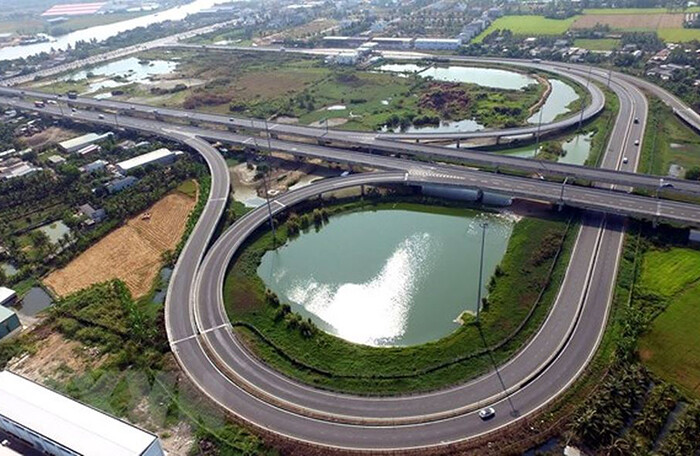
From the beginning of the term until now, 729 kilometers of expressways have been completed and put into operation, bringing the total kilometers of operational expressways to 1,892 kilometers.
The strategic breakthrough in constructing infrastructure, particularly in transportation infrastructure, has witnessed remarkable transformations, especially in the expressway system.
In 2023, numerous expressway projects have been completed and newly initiated, marking a significant development in over a decade. From the beginning of the term until now, 729 kilometers of expressways have been completed and put into operation, bringing the total kilometers of operational expressways to 1,892 kilometers. Simultaneously, approximately 1,700 kilometers of expressways are under construction, with the goal of completing around 3,000 kilometers by 2025 and 5,000 kilometers by 2030, exceeding the national targets.
In aviation, the completion and operation of Passenger Terminal 2 at Phu Bai Airport in Dien Bien represent substantial achievements. Vigorous efforts have been made to resolve issues and initiate the construction of Passenger Terminal 3 at Tan Son Nhat International Airport, as well as the Long Thanh International Airport project. These endeavors ensure quality and meet the required progress.

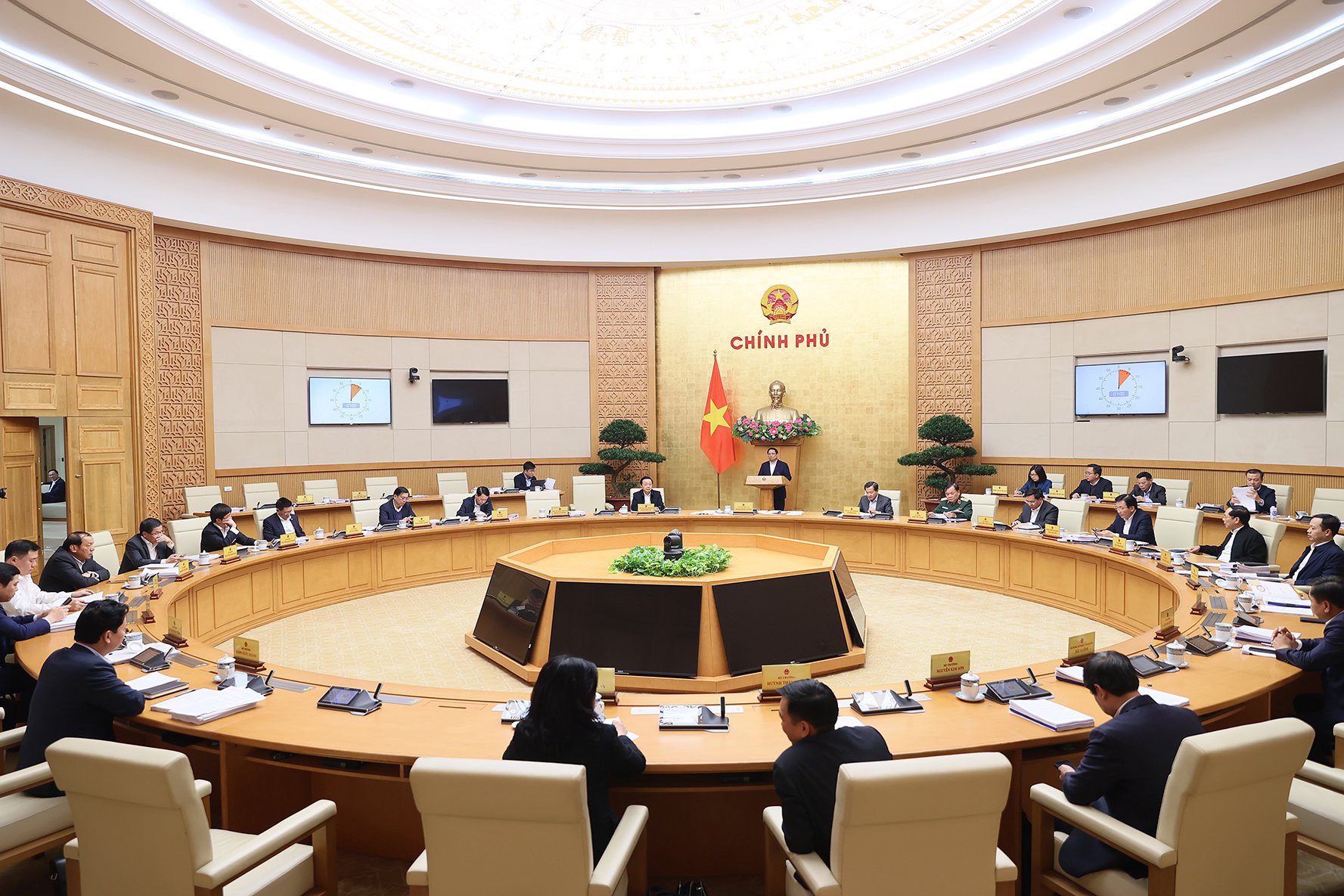
Prime Minister Pham Minh Chinh chaired the Special Session on Legal Construction in December 2023
The work of constructing and improving the legal framework, mechanisms, and policies has been given due attention in line with strategic breakthroughs, featuring numerous innovations in guidance and approaches. The Government has received shared responsibilities, close collaboration, and coordination with the National Assembly and its Standing Committee. In 2023, the National Assembly passed 16 laws, 29 resolutions, and provided opinions on 18 draft laws. The Government held 10 special sessions on legal construction, obtaining feedback on 47 items, with a focus on refining and presenting to the National Assembly the draft Land Law (amended). The Government issued 86 decrees, and the Prime Minister issued 29 decisions with normative content. The comprehensive public administration reform program was vigorously implemented and proved effective, emphasizing the reduction, simplification, and decentralization of administrative procedures. There was a push for decentralization and delegation of authority, organizational restructuring, and rectification of the situation where officials and civil servants avoid responsibilities and fear making mistakes in performing duties. A Government decree was issued to encourage and protect dynamic, innovative, daring, and accountable officials who work for the common good.
Urban planning work progressed rapidly, with 108 out of 111 plans completed, reviewed, and approved, raising the overall quality. The National Comprehensive Planning and many sectoral, local, and provincial plans were also issued.

In the context of many market challenges, the overall import-export turnover is expected to reach 683 billion USD, with a trade surplus of about 26 billion USD. Notably, agricultural product exports, particularly in vegetables, fruits, and rice, have reached new peaks with many record figures.
Specifically, the agricultural group achieved 24.3 billion USD, a 17% increase compared to the previous year. There are 6 items with export values exceeding 3 billion USD, including coffee, rice, fruits and vegetables, cashews, aquatic products, wood, and wooden products.
Vegetable and fruit exports reached 5.6 billion USD, a record high and far exceeding the initial expectation for the whole year of “4 billion USD.” In the first 11 months, Vietnam’s rice exports also set a record with over 7.7 million tons of rice valued at over 4.4 billion USD, a more than 36% increase compared to the previous year. Vietnamese rice surpassed its competitors to claim the top position in the competition for the world’s best rice.
With the signing of the Vietnam-Israel Free Trade Agreement (VIFTA), Vietnam has now signed and participated in 16 FTAs, with ongoing negotiations for 3 more FTAs, namely Vietnam-EFTA (Switzerland, Norway, Iceland, Liechtenstein), ASEAN-Canada, and Vietnam-UAE.

As of December 20, 2023, the total registered foreign direct investment (FDI) in Vietnam reached nearly USD 36.61 billion, a 32.1% increase compared to the same period, marking the third-highest year in the period from 2008 to the present. The realized capital of foreign direct investment projects is estimated at around USD 23.18 billion, a 3.5% increase compared to 2022, setting a record for disbursement in the global investment landscape’s narrowed trade context. Vietnam’s business environment ranking has also improved by 12 places globally.
The business registration activities in 2023 were remarkable, with nearly 160,000 newly established enterprises, a 7.2% increase compared to 2022, exceeding the average for the 2017-2022 period and a 4.6% increase compared to the estimated figures for the entire 2023.
Additionally, over 58,400 businesses resumed operations in 2023. Therefore, the number of businesses entering and returning to the market continues to surpass 200,000, a 4.5% increase compared to the same period in 2022 and 1.3 times the number of businesses exiting the market during the year.
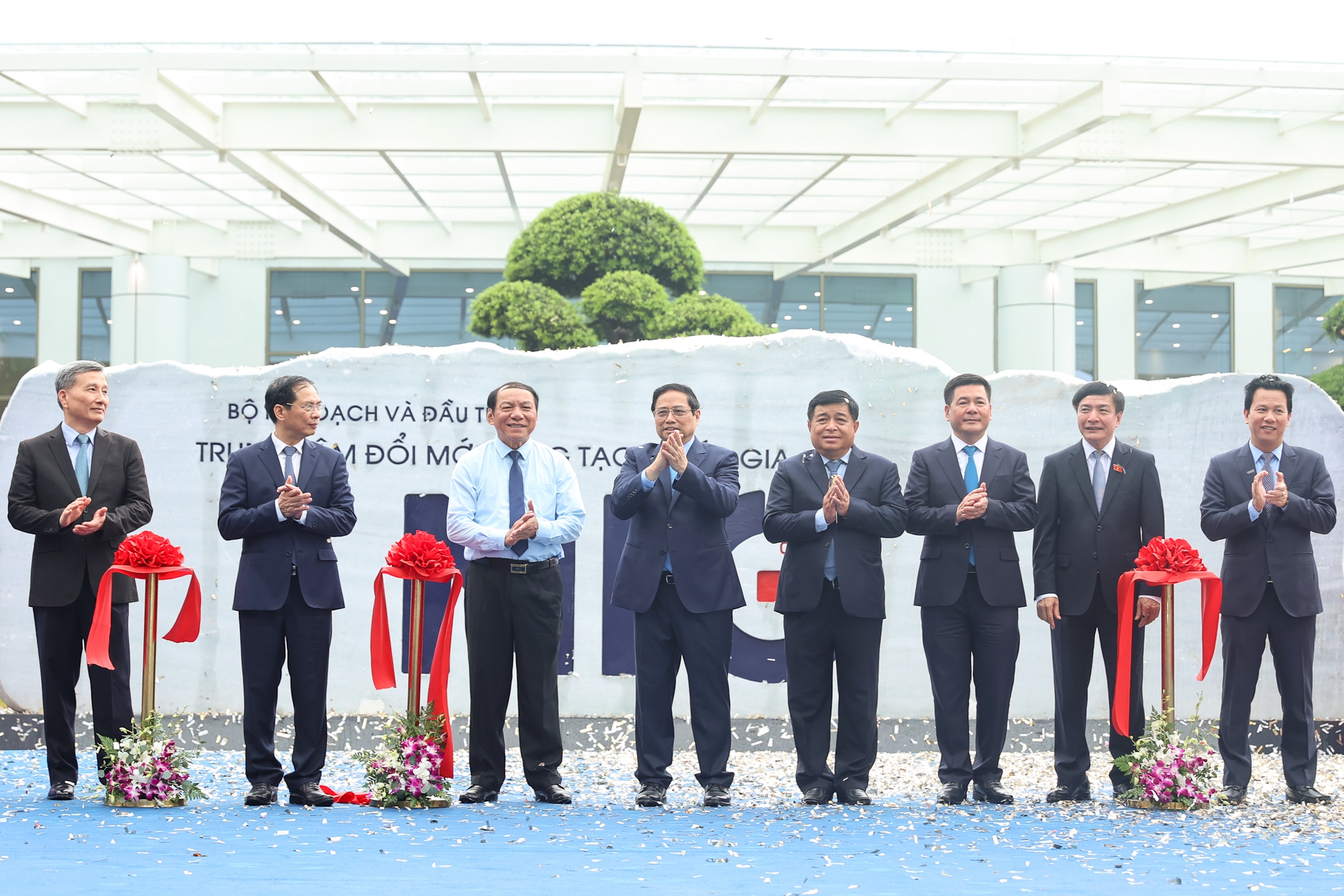
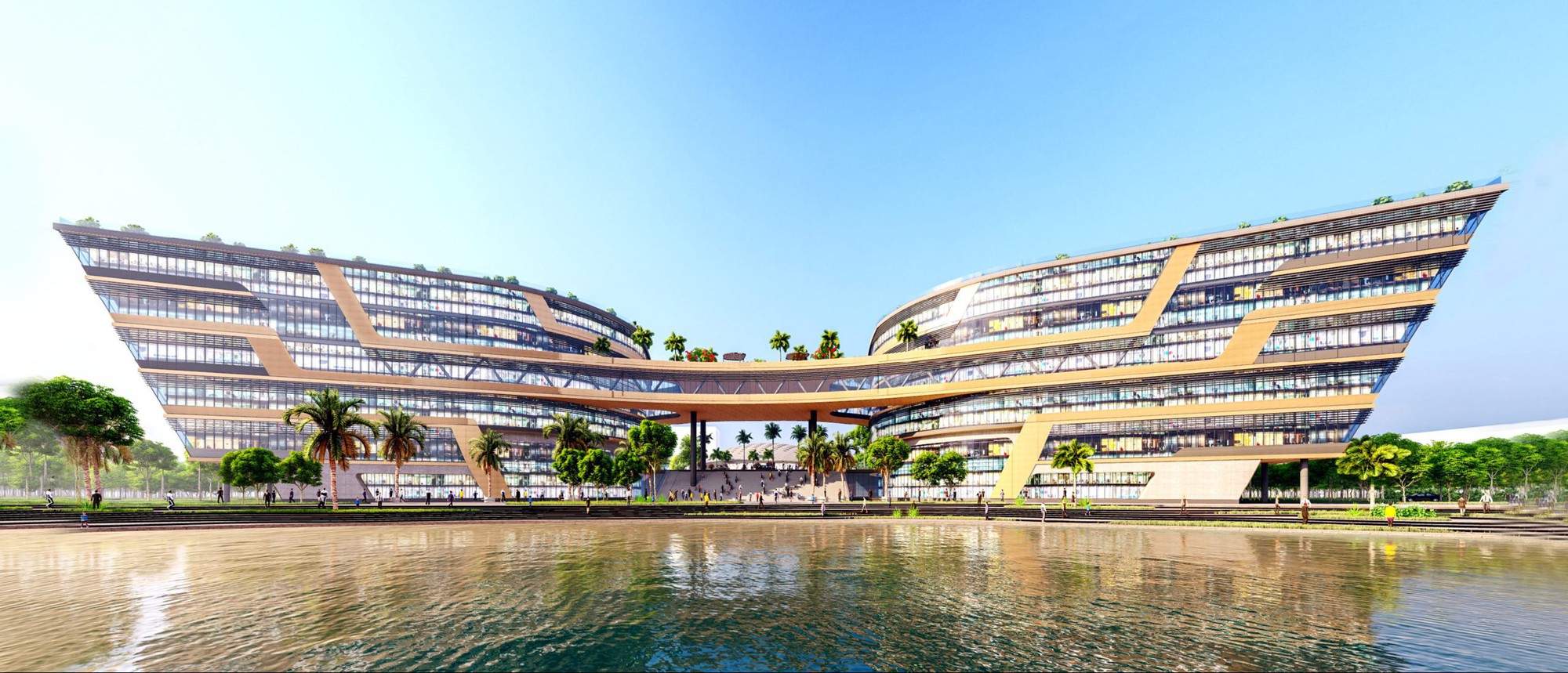
Prime Minister Pham Minh Chinh and delegates cut the ribbon to inaugurate the National Innovation Center (NIC) at the Hòa Lạc facility. Designed in the shape of an eagle spreading its wings, the NIC serves as an iconic representation of the mission to bring creative ideas to life and propel innovative enterprises towards expansive development.
In 2023, new milestones were recorded in restructuring the economy, developing emerging industries and sectors, promoting science and technology, fostering innovation, digitization, green transformation, and advancing the digital economy, green economy, circular economy, knowledge economy, and sharing economy.
The national digital transformation was actively promoted, aiming for a digital economy accounting for approximately 15% of the GDP throughout the year 2023. The implementation of Project 06, which focuses on developing and applying population data, identification, and electronic authentication, was directed with determination and achieved impressive results, contributing to reducing negative impacts and saving time and effort for citizens and businesses, serving as a “bright spot” in the country’s digital transformation.
The science and technology market experienced significant development. The national innovation ecosystem for startup and innovation flourished, marked by the inauguration of the National Innovation Center (NIC) and the concentrated efforts in constructing and perfecting three National Innovation Support Centers in Hanoi, Ho Chi Minh City, and Da Nang. Vietnam’s global innovation index was ranked 46th out of 132 countries, a rise of 2 places compared to 2022.
The year 2023 also witnessed Vietnam’s leap in the semiconductor industry, with a series of agreements and collaborative projects with leading partners and gigantic corporations worldwide.
Vietnam vigorously implemented action programs to address climate change, reduce emissions, and transition to energy following the principles of the Just Energy Transition Partnership (JETP). It became the first time Vietnam issued carbon credits and green bonds, demonstrating its commitment to achieving net-zero emissions by 2050 in line with international community responsibilities.

Public investment has been restructured with a focus on key and focal points, concentrating on projects with high ripple effects to generate development momentum.
The government continues to direct ministries, sectors, and localities to focus on reviewing, detecting, and promptly addressing any shortcomings, difficulties, and obstacles, both in legal regulations and in the implementation mechanism, policies, and organizational aspects. This aims to unlock resources and support businesses in overcoming challenges, promoting growth, creating jobs, and ensuring livelihoods for the people, ensuring a stable life for workers.
The disbursement of public investment for the entire year is estimated at around VND 667.882 trillion, reaching 94.3% of the plan assigned by the Prime Minister. This is higher than the same period in 2022 by about 2.88% (91.42%), with an absolute amount higher by approximately VND 137.6 trillion. Public investment has been restructured with a focus on key and focal projects, concentrating on those with high spillover effects to create development momentum.
The government is determined to address and remove difficulties, limitations, and shortcomings, developing synchronized, safe, healthy, sustainable markets and integration. There has been positive development in stabilizing and growing the corporate bond market and the real estate market. Efforts are ongoing to deal with bad debts, restructure credit institutions, especially weak banks.
There is a focus on restructuring, improving, and enhancing the efficiency of state-owned corporations and groups. The effective resolution of the initial 8 out of 12 prolonged loss-making projects and enterprises is underway. Several large and critical power projects have been completed and put into operation after a prolonged hiatus.

The organization of the 80th-anniversary celebration of the Introduction to Vietnamese Culture and the National Conference on the Development of Vietnam’s Cultural Industries, held for the first time, are significant events aimed at concretizing and implementing the Party’s directives, policies, and laws regarding the cultural development of the state. Particularly noteworthy are the directives provided by General Secretary Nguyen Phu Trong during the National Cultural Conference in 2021.
Cultural and social sectors continue to receive attention and investment for development, achieving more distinct results. All social planning targets have been met and exceeded, clearly demonstrating the admirable nature of our regime, which does not sacrifice progress and social justice to pursue mere economic growth.
Facing economic difficulties, the National Assembly and the Government continue to implement policies of exemption, reduction, and extension of various taxes, fees, and land rents. The total value of these policies is nearly 200 trillion VND, and as of November, over 172 trillion VND has been exempted, reduced, or extended (of which approximately 65 trillion VND is exempted or reduced). Increasing revenue, saving expenses, establishing salary funds (amounting to about 560 trillion VND by now) ensure sufficient sources to reform salaries over the 2024-2026 period.
Social security, care for the lives of laborers, especially vulnerable groups and policy beneficiaries, continues to be strengthened. People’s lives continue to improve, with an average income increase of 6.8% for workers; over 94% of households assess that they have stable or higher income compared to the same period in 2022. According to the World Happiness Report in March 2023 by the United Nations, Vietnam’s Happiness Index has risen by 12 places, from the 77th position to the 65th position in the global rankings.
The commemoration of the 80th anniversary of the Introduction to Vietnamese Culture and the National Conference on the Development of Vietnam’s Cultural Industries, held for the first time, is a significant event to concretize and implement the Party’s directives, policies, and laws regarding cultural development. Especially noteworthy are the directives provided by General Secretary Nguyen Phu Trong during the National Cultural Conference in 2021.
The work of preventing corruption and negative activities continues to be intensified, affirming it as an inevitable trend that cannot be reversed, contributing to strengthening and enhancing the people’s trust in the Party and the State. There have been significant advancements in the investigation, discovery, and trial of numerous major cases. New prosecutions and investigations have been initiated in many cases of particularly serious and complex corruption and negative activities, attracting significant public attention, especially those occurring in specialized and secretive sectors, with intertwined activities between state and non-state areas that have remained unresolved until now. Examples include the ongoing expanded investigation in Phase 2 related to Viet A Company, the case at the Consular Department (Ministry of Foreign Affairs), cases within FLC Group, Tan Hoang Minh, such as the case at SCB Bank, Van Thinh Phat Group, An Dong Company, among others. Many high-ranking officials, both current and retired, are being prosecuted, adhering to the principle of “No restricted zones, no exceptions, regardless of who is involved.”
Source: Bao Chinh Phu | Link
Visit our service | Link
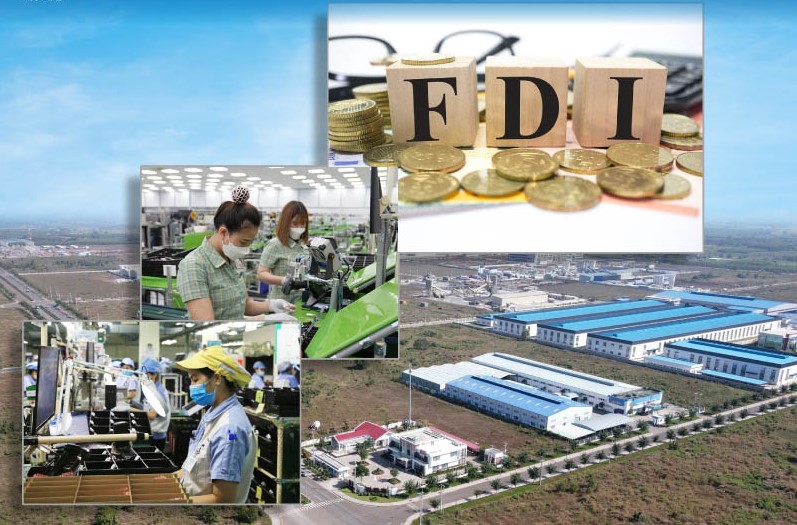
The new position of Vietnam on the world map
From a mere 2 million USD in 1988, Foreign Direct Investment (FDI) flowing into Vietnam has surged to a recorded 524 billion USD by the end of 2022. With over 36,000 active FDI projects, Vietnam has demonstrated its capabilities in attracting and managing foreign investments.
The abundance of FDI capital has bestowed upon Vietnam a new image on the global trade map. The presence of FDI enterprises not only serves as a crucial link but also acts as leverage for Vietnam to deeply engage in the global value chain. This is evident in the fact that the FDI sector consistently leads Vietnam’s exports.
The proportion of FDI in the total export turnover has rapidly increased, from 30% in 1997 – when Vietnam joined ASEAN – to 65% in the 2011-2015 period, and approximately 71% in the 2016-2020 period (according to the Ministry of Planning and Investment).
Furthermore, statistics from the General Department of Customs indicate that the total import-export value of FDI enterprises in 2022 reached 506.83 billion USD, a 9.3% increase compared to 2021. Specifically, the export value of FDI enterprises amounted to 273.63 billion USD, representing an 11.6% increase compared to 2021 and accounting for 73.7% of the country’s total export value.
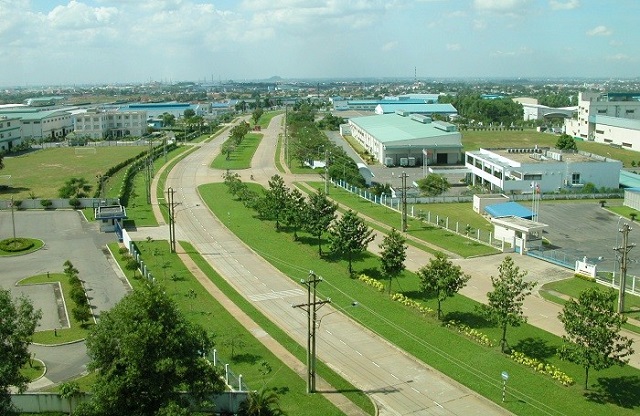
The new position of Vietnam on the world map
The import value of the FDI sector in 2022 reached USD 233.2 billion, a 6.7% increase compared to 2021, accounting for 65% of the country’s total import value. The trade balance of goods for the FDI sector in 2022 reached a surplus of USD 40.42 billion.
The FDI sector holds a dominant position in the import-export value of Vietnam, showcasing the robust development of FDI enterprises in the S-shaped country and their significant contributions to the Vietnamese economy.
The role of the FDI sector becomes even more crucial, especially in enhancing technological capabilities through technology transfer and management skill transfer to the Vietnamese workforce, fostering technological innovation for domestic enterprises. Consequently, labor productivity and the competitive capacity of Vietnamese businesses are elevated within the global value chain.
One of the major limitations in this journey is the lack of linkage between FDI enterprises and domestic businesses. Vietnamese businesses have yet to fully integrate into the ecosystem and value chain of leading enterprises and FDI companies.
Research conducted by the Institute of Economic and Policy Research (VEPR) has identified that, despite years of actively attracting FDI, Vietnam has mainly formed connections with a limited number of FDI enterprises through vertical linkages, including backward and forward linkages.
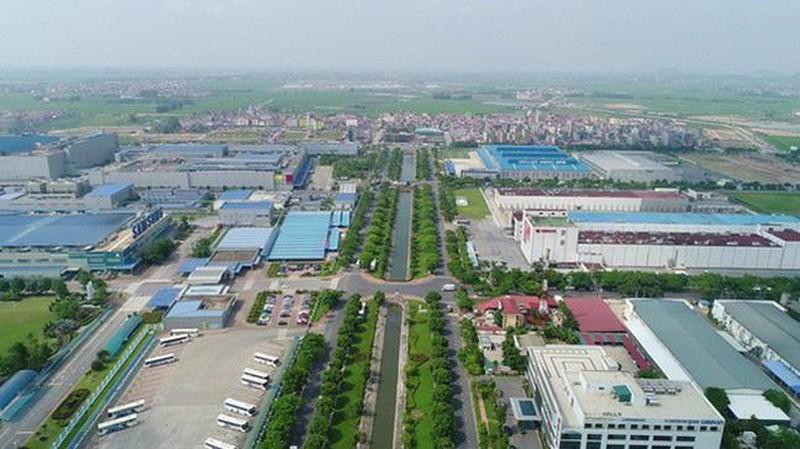
Vietnam primarily engages in the lower value-added segments of the global value chain, often relying on low-skilled labor and low technical requirements. Many domestic enterprises fall short of meeting the criteria to become suppliers for FDI companies.
In FDI projects, joint ventures with domestic enterprises account for only 13%, with the rest being wholly foreign-owned enterprises, clearly indicating that businesses are yet to soar to the level of becoming major players in the global landscape.
To both attract and foster stronger connections between Vietnamese businesses and FDI enterprises, attention needs to be given to enhancing competitiveness and labor productivity for domestic enterprises, emphasizing the establishment of regional linkages. Establishing connections between regions is becoming a crucial measure to stimulate the development of industrial clusters, opening new opportunities for Vietnam’s economic growth.
Next is the push for advanced technology transfer. In this regard, the government needs to refine legal documents and policies related to investment, advanced technology transfer, environmentally friendly practices, and sustainable development. On the part of businesses, proactively seeking opportunities for technology transfer from FDI enterprises, including licensing agreements, inventions, or trade secrets, is essential.
Finally, there is a need to focus on refining support policies to promote export growth while connecting production and supply between domestic enterprises and foreign ones.
Source: Thuong hieu va Cong luan | Link
Visit our service | Link
At the end of November 2023, BYD achieved the milestone of producing the world’s first six million electric vehicles. On average, the company manufactures over 11,000 vehicles per day.
The six million vehicles from BYD include pure electric vehicles (BEV) and plug-in hybrid electric vehicles (PHEV). Plug-in hybrid vehicles are classified under electric vehicles rather than gasoline vehicles because this category utilizes electric motors as the primary driving force, with the internal combustion engine serving to recharge the battery.
BYD’s main competitor, Tesla, currently stands at five million vehicles. It can be said that BYD, following its announcement to completely stop selling traditional internal combustion engine vehicles in April 2022, is experiencing its most explosive growth phase to date.

With a production rate of 1 million vehicles every 3 months, BYD’s annual production could soon reach 4 million vehicles per year, equivalent to Hyundai’s global output in 2022.
The 6 millionth vehicle produced by BYD is the relatively new Fang Cheng Bao Leopard 5, announced in August 2023. This model employs a plug-in hybrid structure centered around a 31.8 kWh battery pack. The electric-only range of the heart brings about 125 km of pure electric operation. This figure increases to a maximum of 1,200 km with support from the generator, which acts as an engine.
BYD currently sells electric vehicles in 58 countries and territories worldwide, despite their export volume being relatively limited (just over 200,000 vehicles). Including various urban public electric vehicle models, the company is present in more than 400 cities across 70 different countries.

The 6 millionth vehicle model from BYD, named Fang Cheng Bao Leopard 5, features a design that bears a resemblance to the new Toyota Land Cruiser Prado.
Nearly 30 years ago, BYD took its initial steps in electric battery production. It wasn’t until 2003 that their automotive division was established. Five years later, the company introduced its first electric vehicle lineup.
In 2021, BYD reached a milestone of producing 1 million electric vehicles. By 2022, they achieved the 3 million mark, and it took only 9 months to reach 5 million. On November 24, just three months after hitting the 5 million mark, BYD announced the production of their 6 millionth electric vehicle.
In Vietnam, BYD has plans to build an electric vehicle assembly plant. Vehicles manufactured in Vietnam will not only be used domestically but can also be exported to other countries in the region.
Source: CafeBiz | Link
Visit our service | Link
Vietnam, with a population exceeding 97 million, is one of the rapidly emerging economies in the ASEAN region. In recent years, driven by robust economic growth and the innate pursuit of beauty, there has been a significant increase in the demand for healthcare and aesthetic services among the population. Since 2018, the Vietnamese government has actively promoted the development of the healthcare industry, resulting in the establishment of over 1,500 public and private hospitals by 2022.
The demand for various advanced medical technologies and medical equipment has been steadily rising, and the COVID-19 pandemic has further accelerated the digitization of Vietnam’s healthcare industry. With endless opportunities, the Vietnamese medical sector is becoming increasingly attractive for Taiwanese businesses to explore and invest in.

As the aging population increases, it drives the demand for medical care and health check-ups in Vietnam. Since 1992, Vietnam has been implementing the Social Health Insurance (SHI) system, with the “Health Insurance Law” amended in 2014. Under the new system, health insurance premiums for children under 6, the elderly, the poor, and ethnic minorities are fully subsidized. Students and individuals close to the poverty line receive partial subsidies, expanding coverage from mandatory insurance for only government officials and pension recipients to mandatory insurance for the entire population. According to government reports, the local health insurance coverage reached 90.85% of the population in 2020.
Furthermore, starting in 2021, the Vietnamese government initiated a healthcare plan for the elderly, aiming for at least 70% of the elderly population nationwide to undergo regular health check-ups annually. It is projected that by 2025, at least 95% of the elderly population will have received health check-ups.
With the aging population, the focus of health check-ups for local residents includes diabetes, hypertension, hyperlipidemia, gout, and cancer prevention and treatment. In recent years, Vietnamese hospitals and clinics have actively improved their medical standards by acquiring advanced medical diagnostic equipment, monitoring devices, and surgical room equipment. This is to meet the healthcare and health check-up needs of the middle and older-aged population, such as X-rays, magnetic resonance imaging (MRI), computed tomography scans (CT), and other imaging equipment for disease diagnosis and monitoring. The demand for these devices has rapidly increased in Vietnam.
In 2022, the Vietnamese medical equipment market became the eighth largest in the Asia-Pacific region, with a size of $16.774 billion, representing 0.4% of the global market. With a compound annual growth rate of 10.2%, it is one of the fastest-growing markets in the Asia-Pacific region.
About 90% of medical equipment in the country relies on imports, with major sources including Japan, the United States, Singapore, China, Germany, etc. The remaining 10% is produced by 50 domestic manufacturers. Vietnamese manufacturers can produce 600 approved products by the Ministry of Health, including implantable devices, surgical instruments, diagnostic imaging equipment, hospital beds, surgical knives, cabinets, scissors, and medical consumables. However, high-end diagnostic imaging equipment is mainly imported from Japan and Germany, with a significant quantity of medical consumables imported from Singapore.
Overall, with the increasing aging population, Vietnam’s focus on healthcare is primarily on cardiovascular diseases, obesity, liver cancer, and orthopedics. The demand for medical equipment and devices includes diagnostic equipment related to the aforementioned health issues and diseases, surgical room instruments and sterilization equipment, patient monitoring devices, emergency room equipment, etc.
The craze for medical aesthetics is prevalent in online communities, with a focus on equipment, technology, and certifications. Vietnamese consumers are known for their beauty consciousness. With the increasing popularity of social media and the influence of online influencers, local consumers’ emphasis on appearance has grown, leading to an increased demand for medical aesthetic services. Vietnamese consumers often seek double eyelid surgery to make their eyes appear brighter and more coordinated with their facial contours. Additionally, autologous fat grafting for breast augmentation has garnered attention from internet users.
The perception of medical aesthetics and plastic surgery among Vietnamese consumers is largely influenced by the Korean wave. Discussions on how Korean celebrities maintain their youthfulness, services provided by Korean doctors in Vietnamese clinics, and local influencers sharing their experiences with plastic surgery clinics in Gangnam are common topics. In addition to Korea, medical aesthetic equipment from the United States, fillers certified by the U.S. FDA, and injection techniques approved by the FDA are frequently discussed by internet users.
Source: 工商時報|Link
Visit our service | Link

Với việc phê duyệt Chiến lược quốc gia về biến đổi khí hậu, Chiến lược quốc gia về tăng trưởng xanh giai đoạn 2021-2030, tầm nhìn đến năm 2050, Chính phủ Việt Nam đã thể hiện quyết tâm và khát vọng phát triển đất nước hùng cường, thịnh vượng và bền vững. Là nước đang phát triển, Việt Nam đã mạnh dạn đưa ra những cam kết mạnh mẽ về phát triển bền vững với quan điểm xuyên suốt là “không chấp nhận phương thức tăng trưởng bằng mọi giá”.
Taị Hội nghị lần thứ 26 các bên tham gia Công ước khung của Liên hợp quốc về biến đổi khí hậu (COP26) tháng 11/2021, Việt Nam đã cùng gần 150 quốc gia cam kết đưa mức phát thải ròng về “0” vào giữa thế kỷ này.
Đặc biệt, trong khuôn khổ Chiến lược phát triển năng lượng quốc gia, Việt Nam đã ban hành Quyết định số 500/QĐ-TTg ngày 15/5/2023 của TTg phê duyệt Quy hoạch phát triển điện lực quốc gia thời kỳ 2021-2030, tầm nhìn đến năm 2050 (Quy hoạch điện VIII) hướng đến các mục tiêu: Đẩy mạnh phát triển các nguồn điện năng lượng tái tạo, giảm mạnh nhiệt điện than, phát triển hợp lý nguồn điện khí sử dụng LNG và sử dụng các nguồn điện sinh khối.
Với vai trò quản lý nhà nước trong lĩnh vực năng lượng với mục tiêu cung ứng đủ năng lượng cho quốc gia, đáp ứng nhu cầu cho phát triển đất nước, Bộ Công Thương đã khẳng định: Việt Nam sẽ không xây dựng các nhà máy nhiệt điện than mới sau năm 2030 để đảm bảo giảm phát thải carbon và mục tiêu cam kết tại COP 26 về trung hòa carbon. Để thực hiện mục tiêu này, tất cả các phương án đề xuất, tính toán đều phải thực hiện chuyển đổi năng lượng tại Quy hoạch điện VIII.
Theo đó, ưu tiên khai thác, sử dụng hiệu quả các nguồn năng lượng tái tạo phục vụ sản xuất điện; tỷ lệ điện năng sản xuất từ các nguồn năng lượng tái tạo (tính cả thủy điện) đạt khoảng 30,9 – 39,2% vào năm 2030, hướng tới mục tiêu tỷ lệ năng lượng tái tạo 47% với điều kiện các cam kết theo Tuyên bố chính trị thiết lập Quan hệ đối tác chuyển đổi năng lượng công bằng (JETP) với Việt Nam được các đối tác quốc tế thực hiện đầy đủ, thực chất và khoảng 67,5 – 71,5% vào năm 2050.
Thực hiện khai thác và sử dụng hiệu quả các nguồn năng lượng hóa thạch trong nước kết hợp với nhập khẩu: Giảm dần tỷ trọng nhiệt điện than, ưu tiên phát triển điện khí trong nước, phát triển các nguồn điện khí LNG nhập khẩu với quy mô phù hợp. Thực hiện chuyển dịch năng lượng bám sát xu thế phát triển công nghệ và giá thành trên thế giới.
Dự kiến, năm 2030, tổng công suất các nhà máy nhiệt điện than đang vận hành và các dự án đang triển khai xây dựng, khả năng sẽ hoàn thành và đưa vào vận hành khoảng 30.127 MW. Định hướng năm 2050, không còn sử dụng than để phát điện, chuyển hoàn toàn sang sinh khối/amoniac, tổng công suất 25.632 – 32.432 MW, sản xuất 72,5 – 80,9 tỷ kWh (5,3 – 6,6% tổng điện năng sản xuất).
Với chương trình phát triển nguồn điện đề ra trong Quy hoạch điện VIII, mức phát thải CO2 của ngành điện năm 2030 đạt 204 – 254 triệu tấn, 2035 đạt 226 – 254 triệu tấn và đến năm 2050 sẽ ở mức 27 – 31 triệu tấn (thấp hơn hạn mức 35 triệu tấn nêu ở trên).
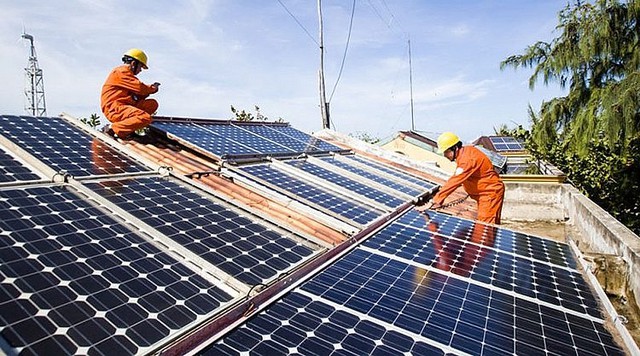
Mới đây, ngày 6/11 tại Quốc hội, Bộ trưởng Bộ Công Thương Nguyễn Hồng Diên đã giải đáp câu hỏi liên quan đến kế hoạch ban hành các cơ chế, chính sách để có hành lang pháp lý phát triển điện mặt trời mái nhà theo Quy hoạch điện VIII.
Bộ trưởng Nguyễn Hồng Diên cho biết, Quy hoạch điện VIII được Chính phủ phê duyệt với tổng công suất nguồn điện là 150.489 MW (không bao gồm xuất khẩu, điện mặt trời mái nhà hiện hữu, năng lượng tái tạo để sản xuất năng lượng mới), tăng 21.000 MW so với tổng công suất nguồn điện trong Quy hoạch điện VII điều chỉnh (130.000 MW).
Trong đó, tổng công suất lắp máy các nguồn điện từ năng lượng tái tạo (không kể thủy điện) đã chiếm tỷ trọng 28,5% tổng công suất nguồn điện. Đây là một tỷ trọng rất lớn mà ngay cả các nước phát triển, có trình độ công nghệ cao, sở hữu hệ thống lưới điện thông minh và các thiết bị lưu trữ điện năng ở mức cao thì tỷ trọng này cũng chỉ ở ngưỡng trên dưới 20%.
“Đây là một mục tiêu phấn đấu rất cao và bên cạnh những nỗ lực của Việt Nam rất cần sự hỗ trợ của cộng đồng quốc tế, nhất là cam kết JETP”, Bộ trưởng nói.
Để có thể bù đắp cho việc huy động điện năng lượng tái tạo ở mức cao trong khi đây là các nguồn điện phụ thuộc vào điều kiện thời tiết, Bộ trưởng cho rằng cần nghiên cứu xây dựng cơ chế giá điện cho các nguồn điện mới như: pin tích trữ năng lượng, phát triển thủy điện tích năng… bởi đây là các nguồn điện linh hoạt cao.
Đồng thời, cần đẩy mạnh khuyến khích các hoạt động đầu tư điện mặt trời tự sản tự tiêu, không nối lưới để khai thác tiềm năng của năng lượng tái tạo (điện gió, điện mặt trời), chú trọng phát triển các loại thiết bị lưu trữ điện. Song song với đó, cần đẩy mạnh nghiên cứu phát triển lưới điện thông minh; đẩy nhanh xây dựng cơ chế mua bán điện trực tiếp và thúc đẩy thị trường điện cạnh tranh ở cả 3 cấp độ.
Hiện, Bộ Công Thương đang trình Chính phủ ban hành Nghị định phát triển mặt trời áp mái và dự thảo về cơ chế mua bán điện trực tiếp trên cơ sở nghị quyết của Ủy ban Thường vụ Quốc hội.
Với quan điểm phát triển năng lượng bám sát xu thế phát triển của khoa học – công nghệ, nhất là năng lượng tái tạo, gắn với chuyển đổi mô hình kinh tế đất nước theo hướng tăng trưởng xanh, kinh tế carbon thấp và các cam kết của Việt Nam trong chuyển đổi năng lượng bền vững, Quy hoạch điện VIII đã đề ra các giải pháp về phát triển khoa học công nghệ.
Theo đó, từng bước hình thành cơ chế liên kết giữa lực lượng nghiên cứu và phát triển khoa học – công nghệ, đổi mới sáng tạo với các doanh nghiệp và các cơ sở đào tạo trong lĩnh vực năng lượng thông qua các chương trình khoa học và công nghệ; lồng ghép hoạt động nghiên cứu và phát triển trong các chiến lược, quy hoạch, kế hoạch phát triển năng lượng.
Tạo cơ chế khuyến khích các doanh nghiệp năng lượng tăng cường đầu tư cho nghiên cứu và phát triển; thành lập các trung tâm đổi mới sáng tạo trong lĩnh vực năng lượng.
Tiếp tục triển khai chương trình khoa học và công nghệ trọng điểm quốc gia về nghiên cứu ứng dụng và phát triển công nghệ năng lượng giai đoạn 2021 – 2030, trọng tâm là nghiên cứu chế tạo thiết bị năng lượng và ứng dụng các dạng năng lượng mới, năng lượng tái tạo, năng lượng thông minh, tiết kiệm năng lượng.
Tăng cường nghiên cứu, ứng dụng và chuyển giao công nghệ; xây dựng đội ngũ cán bộ khoa học công nghệ đầu ngành, có trình độ cao; tăng cường các biện pháp nhằm gắn kết chặt chẽ hơn nữa giữa nghiên cứu khoa học với đào tạo và ứng dụng. Đẩy mạnh nghiên cứu khoa học, hợp tác quốc tế trong lĩnh vực bảo vệ môi trường, ứng phó biến đổi khí hậu để từng bước đưa vào áp dụng các công nghệ mới nhằm nâng cao hiệu quả, tiết kiệm chi phí bảo vệ môi trường.
Đẩy mạnh nghiên cứu các dạng năng lượng mới, như năng lượng hạt nhân, sóng biển, địa nhiệt, hydro xanh, amoniac xanh…; xây dựng các chiến lược về các dạng năng lượng mới khác.
Sử dụng năng lượng tiết kiệm và hiệu quả còn là một trong những giải pháp hữu hiệu nhất giúp giảm áp lực trong việc cung ứng năng lượng.
Tiết kiệm điện thực chất, hiệu quả
Sử dụng năng lượng tiết kiệm và hiệu quả còn là một trong những giải pháp hữu hiệu nhất giúp giảm áp lực trong việc cung ứng năng lượng, đồng thời giúp bảo tồn nguồn năng lượng quốc gia, bảo vệ môi trường và giảm phát thải khí nhà kính, đóng góp cho việc thực hiện cam kết của Việt Nam tại Thỏa thuận Paris về ứng phó với biến đổi khí hậu toàn cầu cũng như tại COP26 về thực hiện lộ trình giảm phát thải khí nhà kính về 0 vào năm 2050.
Khảo sát của Chương trình quốc gia về sử dụng năng lượng tiết kiệm và hiệu quả giai đoạn 2019-2030 (VNEEP3) cho thấy, các ngành công nghiệp của Việt Nam đang chiếm hơn 50% tổng tiêu thụ năng lượng toàn quốc, với tiềm năng tiết kiệm năng lượng lên tới 30 – 35%.
Hiện, cả nước có 3.068 cơ sở sử dụng năng lượng trọng điểm, có mức tiêu thụ điện bình quân là 80 tỷ kWh/năm. Nếu các cơ sở tiêu thụ điện trọng điểm này tiết kiệm tối thiểu 2% điện năng tiêu thụ/năm thì bình quân mỗi năm cả nước tiết kiệm được khoảng 1,6 tỷ kWh, tương ứng với tiền điện tiết kiệm được hơn 3.200 tỷ đồng. Tương tự, với 27 triệu hộ gia đình, nếu tiết kiệm 1% điện thì mỗi năm cả nước tiết kiệm được 630 triệu kWh, tương đương 1.174 tỷ đồng.
Để thúc đẩy việc thực hiện các hoạt động sử dụng năng lượng tiết kiệm và hiệu quả, trong hơn 20 năm qua, Chính phủ Việt Nam đã thực thi một loạt các chính sách và chương trình, hành động quan trọng như: Ban hành và triển khai Luật Sử dụng năng lượng tiết kiệm và hiệu quả. Cùng với đó là một hệ thống các nghị định, quyết định của Thủ tướng Chính phủ và thông tư của Bộ Công Thương và các Bộ, ngành có liên quan được ban hành để hướng dẫn thi hành Luật Sử dụng năng lượng tiết kiệm và hiệu quả. Triển khai các Chương trình mục tiêu quốc gia về sử dụng năng lượng tiết kiệm và hiệu quả giai đoạn 2006-2015 và Chương trình quốc gia về sử dụng năng lượng tiết kiệm và hiệu quả giai đoạn 2019-2030.
Đặc biệt, năm 2010, Chính phủ đã trình Quốc hội về Luật Sử dụng năng lượng tiết kiệm và hiệu quả. Đây là cam kết mạnh mẽ nhất, là văn bản pháp lý cao nhất để khẳng định tất cả các chủ trương chính sách của Chính phủ về tầm quan trọng của tiết kiệm năng lượng.
Về phía Bộ Công Thương, ông Đặng Hải Dũng, Phó Chánh Văn phòng Ban Chỉ đạo Tiết kiệm năng lượng (Bộ Công Thương) cho biết, để hiện thực hoá mục tiêu tiêu tiết kiệm năng lượng, Bộ Công Thương tập trung vào 2 nhóm đối tượng sử dụng năng lượng lớn là công nghiệp và gia đình hướng đến các chính sách hỗ trợ kỹ thuật và tài chính nhằm thúc đẩy các dự án đầu tư công nghệ sản xuất tiết kiệm năng lượng và tuyên truyền ưu tiên sử dụng thiết bị công nghệ hiệu suất cao.
Bộ Công Thương cũng đang tiến hành rà soát, sửa đổi Luật Sử dụng năng lượng tiết kiệm và hiệu quả nhằm tăng cường hiệu lực, hiệu quả trong việc thực thi các quy định của luật. Trong quá trình rà soát, Bộ Công Thương tập trung đánh giá lại 5 nhóm vấn đề gồm: Nhóm vấn đề đối với các cơ sở sử dụng năng lượng trọng điểm; nhóm vấn đề đối với các trang thiết bị sử dụng năng lượng; nhóm vấn đề liên quan đến các cơ sở đào tạo, đơn vị cung cấp nguồn nhân lực cho việc sử dụng năng lượng tiết kiệm và hiệu quả; nhóm vấn đề liên quan đến các cơ chế hỗ trợ tài chính cho các dự án tiết kiệm năng lượng; cuối cùng là nâng cao trách nhiệm của các cơ quan quản lý nhà nước, quy trách nhiệm rõ ràng hơn cho các cơ quan quản lý nhà nước trong từng lĩnh vực.
“Như vậy, lộ trình chuyển đổi năng lượng trong Quy hoạch điện VIII sẽ đảm bảo mục tiêu phát thải ròng bằng “0” vào năm 2050 trong Quyết định số 896/QĐ-TTg”, Bộ Công Thương thông tin.
Nguồn: CafeF | Liên kết
Tham khảo dịch vụ của SIA | Liên kết
在過去的十月,艾克爾集團在北寧省安風 II-C工業區舉辦了越南艾克爾科技(Amkor Technology Vietnam)工廠的竣工典禮。 該項目的總投資截至2030年將達到16億美元,其中第一階段為5.2億美元。

艾克爾位於北寧的越南半導體晶片工廠
艾克爾是目前在越南營運的最大半導體製造廠之一。 在初期階段,該工廠將專注於為全球電子和半導體領先公司提供先進封裝系統(SiP)的組裝和測試解決方案。
該公司表示將繼續研究並推動工廠的第二和第三階段的投資,將北寧打造成全球新的半導體晶片生產中心。
在九月份,韓國Hana Micron Vina有限公司,一家專業生產和加工用於行動電話和智慧電子產品的積體電路板的企業,也在北江省雲中工業區興建了Hana Micron Vina 2生產工廠。 這是北部地區首個生產半導體的工廠。
以近6億美元的總投資,Hana Micron已成為北江省最大投資額的項目之一。 Hana Micron集團主席Choi Chang Ho表示,該公司計劃在2025年將投資增加到超過10億美元。 屆時,該工廠的預計收入將達到8億美元,為逾4,000名工人創造就業機會。
另一家企業Runergy集團也選擇了義安省來實施其擴大在越南市場的投資計畫。 於6月22日,該集團決定在黃梅1工業區投資總額為2.93億美元的矽棒和半導體盤生產工廠。 到8月30日,該企業調整其註冊投資總額至4.4億美元。
在10多年前,英特爾也開始在越南建造工廠,規模達10億美元。 目前,越南是該科技公司在胡志明市高科技園區設有最大組裝和測試工廠的地方。 據估計,該工廠佔了英特爾全球產量的50%以上。
美國半導體工業協會主席John Neuffer指出,越南正逐漸成為全球晶片生產鏈中更重要的一環。 投入研發的努力以及全球科技巨頭如英特爾、邁威爾等公司的存在將有助於推動越南實現半導體產業的目標。
外商投資企業協會主席阮業評論說,像英特爾、三星和鴻海這樣的半導體巨頭有充分的理由選擇在越南投資。 因為越南擁有非常重要的資源,包括2,200萬噸稀土和大量的鎢資源。

安沛省稀土礦
越南具有許多優勢,其中最突出的是擁有大量的稀土儲備。 這是半導體和電池生產中所需的重要原料。 這也是引導這個產業的巨頭們前來投資越南的原因之一,阮業先生分享道。
根據越南工業局數據,越南的稀土儲量約22百萬噸。 越南的稀土礦規模從中等到大型不等,主要是輕稀土(鑭系元素 – 鈰系)礦,主要來自熱液源,並集中在西北地區。
由於其被評估的稀土儲量僅次於中國,越南被視為未來稀土原料的潛在供應國。
在一次新半導體材料會議上發表演說時,工業和貿易部長阮志勇明確表示,越南具備在國內建立半導體生態系統的條件。
根據阮志勇的說法,政府和總理非常關注推動越南的半導體產業合作和發展。 政府已委託工業和貿易部、資訊和通訊部以及其他相關部門制定行動計劃和策略,以發展越南的半導體產業。 越南也正在製定人力資源發展計劃,目標是到2030年形成一個5萬名半導體工程師和專家的隊伍。
此外,越南在技術和工程領域擁有豐富的勞動力,適應半導體產業的需求;還有一些備受推崇的研究和培訓機構,以及一些擁有資源的大型企業,如Viettel、VNPT、FPT、CMC等。
越南已經吸引了越來越多來自美國、韓國等國的半導體巨頭。 特別是,越南與美國已將其關係升級為全面戰略夥伴關係,其中包括半導體產業的發展。
越南也成立了國家創新中心(NIC)和在胡志明市、和樂(河內)和峴港市設有三個高科技園區,隨時歡迎半導體產業的投資者,並提供豐厚的優惠政策。
根據美國地質調查局2022年的公告,全球儲量最大的五個國家包括中國(4,400萬噸)、越南(2,200萬噸)、巴西(2,100萬噸)、俄羅斯(2,100萬噸)和印度(690萬 噸)。
根據2021年至2030年和展望至2050年的勘探、開採、加工和利用礦產規劃,越南計劃在2021-2030階段實施8個勘探項目,目標儲量為983,176噸;在2031-2050階段將實施1個 勘探項目,目標儲量為1.5百萬噸。
在開採方面,2021-2030階段預計採掘約200萬噸礦石;2031-2050階段預計達到每年約210萬噸NK礦石。 第一階段將加工22,500-62,500噸稀土總氧化物/年,以便從中分離出各種獨立的稀土。 第二階段將加工約42,500-82,500噸稀土總氧化物/年,以便從中分離出各種獨立的稀土。
資料來源: Bao Giao Thong | 連結
參考我們SIA的服務 | 連結
Yong Feng Yu, considering the evolving trends in the medium to long-term international economic and trade landscape, has decided to increase its investment by nearly 1 billion to participate in the proposed capital increase for its industrial paper and paper products business.
In light of the medium to long-term changes in the international economic and trade situation, Yong Feng Yu (YFY) has decided to increase its investment by nearly 1 billion to participate in the proposed capital increase for its industrial paper and paper products business. According to information available, there are two main focuses. First, in line with the ‘Mainland Plus One’ strategy, the company aims to expand the operation scale of its paper factory in Vietnam to seize the opportunities arising from the global shift of manufacturing industries to the south. Second, the company plans to enhance overall production efficiency in Taiwan and Vietnam, moving towards low-carbon, low-energy consumption, and smart manufacturing to continue expanding its market presence.
The industrial paper and paper products business contributed over 40% to YFY’s revenue in the first three quarters, making it a significant part of the company. Currently, the company has production and sales bases in both Taiwan and Vietnam. Given the increasing geopolitical tensions, the long-term growth potential in Vietnam is promising. Last year, the company established two new paper packaging companies, YFY Packaging (Nghe An) and YFY Packaging (Quang Ngai). Following the company’s tradition, it is speculated that at least two new paper factories will be established in Vietnam in the future.
During the analyst conference on the 14th, CEO Luo Bingzheng pointed out that the short-term economic downturn in Vietnam does not affect the overall economic growth trend, and the company remains optimistic about the medium to long-term prospects. The customer industrial clusters in Northern and Southern Vietnam are different, with Southern Vietnam being dominated by Taiwanese businesses and diverse industries, while Northern Vietnam focuses mainly on export and technology industry customers. YFY’s industrial paper will meet the needs of different customers and create distinctions.
As for the Chinese industrial paper and paper products market, after the price increase actions in September and October, terminal selling prices have risen, downstream inventories have been cleared, but whether this trend will continue needs further observation. The market share of industrial paper in Taiwan has not changed significantly. Besides paper boxes, YFY continues to optimize its product portfolio to improve resource efficiency.
YFY’s industrial paper revenue declined by about 10% in the first three quarters, with a low single-digit decline in revenue from Vietnam and a 10% decline across the Taiwan Strait.
Currently, YFY’s industrial paper segment in Taiwan consists of one paper mill and six paper product factories, making it one of the top three paper mills in Taiwan. In Vietnam, the company has six paper product factories, making it the largest paper box supplier in the country. The company is well-prepared with financial resources, and once demand becomes clear, it will establish new paper product factories. In mainland China, YFY has one paper mill and twelve paper product factories.
In the first three quarters, YFY faced a sluggish overall economic recovery, conservative consumer spending, and incurred a loss of 463 million in its core business. However, the main contribution to its income, around 2.293 billion, came from external investments. This was primarily due to the recognition of investment income benefiting from investments in companies like YFY Inc., and the inclusion of dividends from affiliated businesses such as Yong Feng Bank. The consolidated net profit after tax was approximately 1.327 billion, with earnings per share after tax being 0.8.”
Source:Yahoo 新聞|Link
Visit our service|Link
